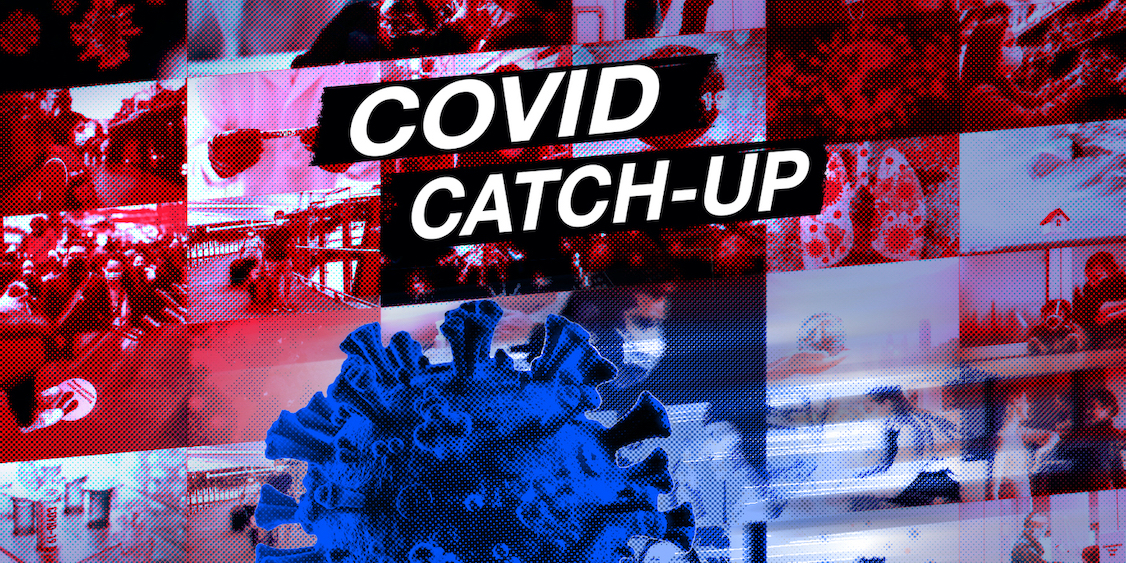As Victoria sets a record for new infections in 24 hours, Premier Dan Andrews has announced that masks will be mandatory in regional Victoria from midnight Sunday night.
Welcome to The Medical Republic‘s COVID Catch-Up.
It’s the day’s COVID-19 news into one convenient post. Got any tips, comments or feedback? Email me at bianca@biancanogrady.com.
30 July
- Regional Victorians must mask-up as Premier warns of COVID-19 spread outside Melbourne.
- School closures in US associated with significant drops in COVID-19 incidence and mortality.
- ASCOT trial drops hydroxychloroquine and lopinavir/ritonavir, and adds convalescent plasma arm.
- Incidence of COVID-19 in Indigenous communities significantly lower than general population.
- Three more infections reported in Queensland.
- Oh, Victoria. The COVID-19 situation continues to escalate, with a new record set for the highest number of new infections in 24 hours: 723 new cases, and 13 more deaths.
Premier Dan Andrews announced at a press conference today that masks will be mandatory in regional Victoria from midnight Sunday night. From midnight tonight visitors are no longer permitted in households in six local government areas along the so-called Geelong corridor: Greater Geelong, Surf Coast, Moorabool, Golden Plains, Colac Otway, and Queenscliff.
The premier stressed multiple times the importance of symptomatic or infected individuals not going to work, citing one case where a person who had received a positive test result was doorknocked and found to be at work.
“We will not get business reopened, and will not see many businesses survive, so long as people continue to go to work when they are unwell,” he said. - School closures during the peak of the pandemic in the United States were associated with a reduced incidence of COVID-19 and lower mortality, but this may have also been a function of other interventions, say the authors of a study published in JAMA.
Researchers examined the impact of closing state primary and secondary schools on COVID-19 incidence and mortality, using a model that accounted for the lag period between closures and changes in outcomes, and the lag between infections and death.
They estimated that closing schools was associated with a 62% decline in the incidence of COVID-19 per week, and a 58% decline in mortality per week.
The effects were greatest in states which had lower numbers of COVID-19 cases at the time of school closures. The analysis suggested that closing schools when cases were in the lowest quartile compared to doing so when they were in the highest quartile was associated with more than 128 fewer cases per 100,000 population over 26 days, and 1.5 fewer deaths per 100,000 population over 16 days.
However the authors stressed that completely isolating the effects of one public health intervention – school closures – from the effects of other simultaneously implemented interventions such as closing non-essential businesses and bans on large gatherings was impossible.
An accompanying editorial said that although the study findings suggested there was a role for school closures in helping to control spread of the virus, this needed to be balanced with academic, health and economic consequences. - The AustralaSian COVID-19 Trial (ASCOT) steering committee has dropped both hydroxychloroquine and lopinavir/ritonavir from its treatment arms owing to reports that neither were effective in treating COVID-19, according to an update from the trial.
However the randomised controlled trial will now add a convalescent plasma treatment arm, and researchers are urging people who have recovered from COVID-19 to donate plasma. - Only 60 COVID-19 cases in Australia have occurred in First Nations individuals, which is a significantly lower rate than has been seen in non-Indigenous Australians, according to a letter in The Lancet.
While First Nations people make up around 3% of the population of Australia, they represent only 0.7% of COVID-19 cases, none of which have ended up in intensive care or died, the letter’s authors wrote.
This achievement is the result of having a First Nations-led response to the pandemic, which was lobbied for after Indigenous communities were badly affected by the 2009 H1N1 influenza epidemic. As a result, remote communities were swiftly closed as the COVID-19 pandemic spread, and effort was put into helping within PPE, testing and contact tracing, as well as tailored and extensive social media communications about COVID-19.
“The result of this First Nations-led response has shown how effective (and extremely cost-effective) giving power and capacity to Indigenous leaders is,” the authors wrote. - Queensland has recorded three new infections – two interstate travellers who had recently returned from Victoria, and a close contact. The two initial cases did not follow quarantine requirements and visited a number of locations before being diagnosed and put into isolation. The state health department has asked anyone in the areas of Logan, South Brisbane or Springfield who has symptoms to get tested as soon as possible, and isolate themselves in the meantime.
Cases continue to rise in New South Wales, with 19 new infections reported yesterday. The Sydney suburbs of Potts Point and Mt Pritchard are on alert, with authorities reissuing warnings – with revised dates – for any patrons who visited Pritchard’s Hotel or Mounties between the 23-25 July.
Here are the confirmed COVID-19 infection figures to 9pm Wednesday:
National – 15,582, with 176 deaths and 323 hospitalised.
ACT – 113
NSW – 3718
NT – 31
QLD – 1078
SA – 448
TAS – 229
VIC – 9304
WA – 661



